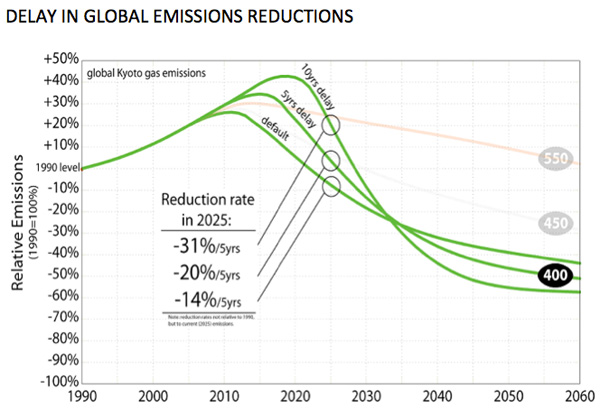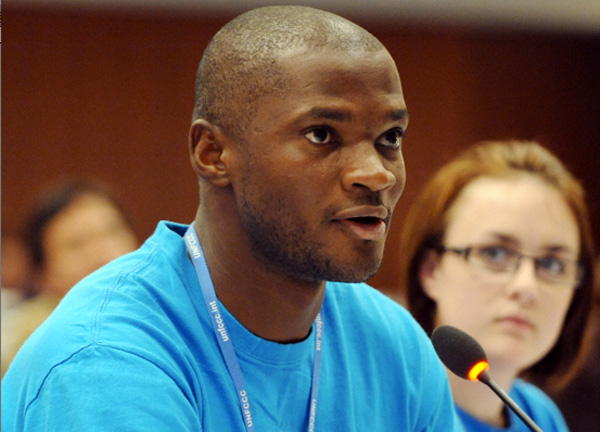This article was first published in The Guardian.
At the opening ceremony of Climate Week New York last month, Tony Blair drew a laugh from the crowd when he quipped: “It’s a relief after the weeks I’ve spent deep in the entrails of the Middle East peace process to talk about something that’s relatively easy to solve.”
In some respects he’s right. The solutions to climate change are relatively straightforward (phasing out fossil fuels for one), if somewhat challenging to implement. But the negotiations? The politics driving them are as difficult as they come, with the future of the Kyoto protocol at the centre of the conflict.
Kyoto’s first commitment period finishes at the end of 2012, and the question of whether governments will sign up to a second commitment period is seen by many as the linchpin of the negotiations. Allowing Kyoto to lapse would be a very, very bad idea for several reasons:
1) It’s the only binding international climate law we’ve got, with no alternative in sight. Without a legally binding agreement, we are left with vague intentions and no guarantees of success. Like allowing a kid to choose how much homework he really needs to do, the net result would ultimately amount to precious little, I suspect.
2) It’s working. The US is the only major industrialised country which did not ratify Kyoto. Collectively, developed countries that ratified Kyoto are on track to achieve the protocol’s target of an average decrease in emissions of 5.2% below 1990 levels between 2008 and 2012. Kyoto has triggered the enactment of national legislation in the majority of OECD countries, including the EU’s landmark “20-20-20″ targets. The United States, in stark contrast, saw its emissions rise by an estimated 11% in the same period.
3) It is helping drive the growth of the renewables industry in Europe and in big developing countries that are covered indirectly by Kyoto’s carbon markets. 65% of the projects stemming from Kyoto’s clean development mechanism, which allows countries to reduce emissions by investing in projects in developing countries, are focused on renewables. While countries could establish an international carbon-trading market even in the absence of Kyoto, it would have to be governed by basic, commonly agreed rules to ensure projects were genuinely climate-friendly. Kyoto has such rules (representing more than a decade of effort), markets are up and running and those that break the rules are brought to account – why not build on these rather than start over from scratch?
4) It’s fair (though it would be far fairer if the US had signed on). Kyoto’s first commitment period put the onus of first action on the highest and richest historical emitters. While the US whines about large developing countries such as China not being directly covered by Kyoto, it’s worth remembering that the concentration of CO2 in the atmosphere is a cumulative process, and cumulatively (1900-2007) the EU and the US together were responsible for nearly 54% of the energy-related emissions. China? Just over 9%. It’s even more enlightening to factor in the size of the population: the US emitted 1,093 metric tonnes per capita; the EU 572, and China a mere 80.
5) It represents collective action: Kyoto has an “aggregate” goal – the total of what individual country targets must add up to. This is the opposite of the bottom up, pledge approach now championed by the Obama Administration. The relatively short-term five-year commitment periods allow those goals to be ratcheted up as new information becomes available.
So how do we save Kyoto? First and foremost, it’s a matter of political will. In the run-up to the upcoming climate summit in Durban:
Europe must signal its clear intention to sign up to a second round of Kyoto commitments, and encourage other Kyoto parties do so as well. The EU’s Durban position will be decided on 23 October.
The US should stop badmouthing Kyoto. Honestly, what gives them the right? Everyone else should simply ignore the US on this subject.
The largest and wealthiest developing countries need to play their part too. A new, development friendly, legally distinct pathway under the protocol, like a new annex, could be created for developing countries to record emissions reduction pledges and actions according to their individual circumstances, responsibility and level of income.
If Kyoto’s future dies in Durban, it may well be the death knell for an effective, comprehensive internationally co-ordinated and legal response to global climate change in this decade. We can’t afford to let that happen.






 YOUNGO making a Statement, IISD
YOUNGO making a Statement, IISD